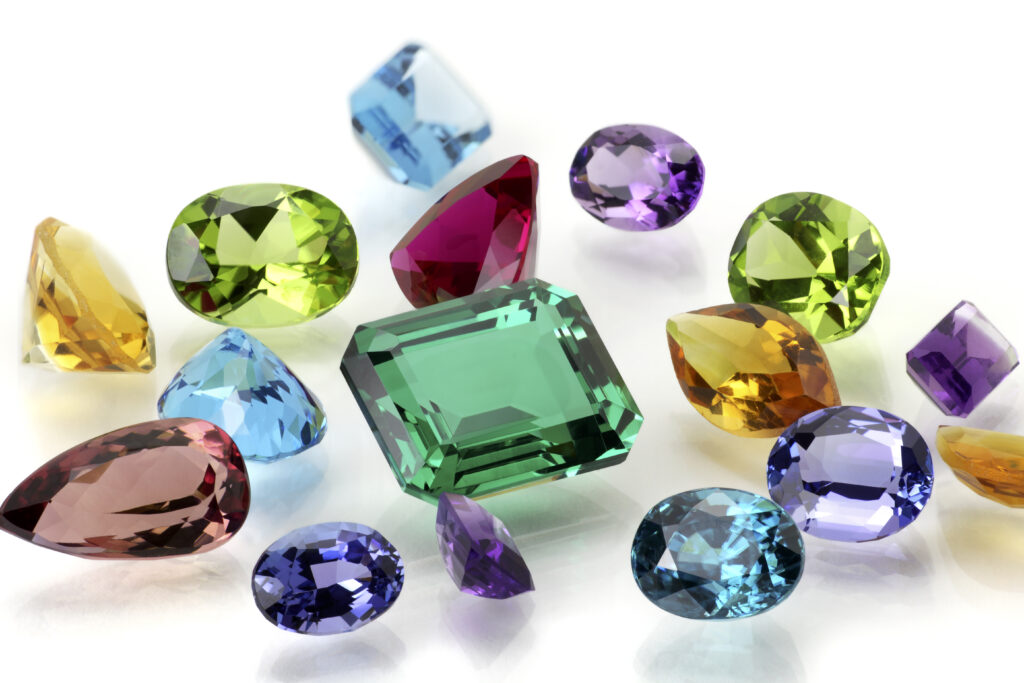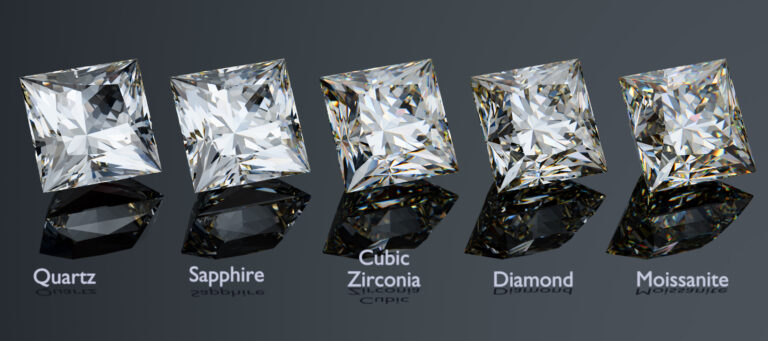
For many years, scientists have been developing and experimenting with treatments to change the colour of a diamond. Certain colours increase a gem’s value and, therefore, the price. Diamonds come in various colours; in the D-Z scale, less colour concertation means higher value; in the fancy colour scale, the higher the concertation, the higher the value. The diamonds that are used for colour modification are the ones that are considered less rare according to both scales. Therefore, the objective of a treatment is to either decrease or increase the colour. Usually, brown or light yellow diamonds are taken for colour alteration.
A diamond can be of different colours because of the presence and arrangement of atoms in its lattice. A diamond is composed of Carbon, but impurities of Nitrogen and Boron may get trapped while the diamond is forming. Nitrogen gives a yellow colour, whereas Boron gives blue. When a diamond undergoes treatment, these atoms diffuse, bond, or create vacancies. Each treatment may produce a different colour depending on the starting type of a diamond. However, to understand how the type of diamond plays a role in colour alteration, more extensive chemistry knowledge is needed. This article discusses only the kinds of diamond treatments.
- Coating
One of the first methods used to change the colour of a diamond is a simple coating. It did not require modern technology or the alteration of the crystal lattice in a diamond. In the beginning, a mixture of natural resins, oils, and pigments was used to coat a gem. In the 1950s, a more modern recipe evolved – silica. This coating is performed in a vacuum chamber by applying several layers with different trace elements, making a diamond of various colours. Nevertheless, this treatment is not permanent; it can be scratched off or damaged when the jewellery is being repaired and polished.
- Irradiation
Another method used in the early 1900s was irradiation, which turned diamonds into green but made them radioactive. These days, a safer method of irradiation is practised, which does not generate radioactivity. The disadvantage of this treatment is that if a diamond is exposed to heat, it will change its colour. Nevertheless, the diamond’s colour cannot be reversed to the original after the treatment; thus, it is is a permanent method of changing colour.
- Irradiation and Annealing
After the diamond is irradiated it can be annealed. This process involves heating and cooling a gem at 600°C to 1000°C. The temperature range depends on the colour that is willing to be achieved. If the irradiated and annealed diamond is set into jewellery, it is more stable to heat repairs than when it is only irradiated.
- High-Pressure, High-Temperature (HPHT) Treatment
The HPHT method is used not only for growing laboratory diamonds but also for colour alterations. To modify the colour of a diamond, the HPHT treatment is used at higher temperatures of 1800 °C to 2500 °C and higher pressures of 4 to 7 GPa compared to growing diamonds, which is done at 1300 °C to 1600 °C and 5 to 6 GPa. When a diamond undergoes HPHT treatment, it needs to be repolished due to the high pressures that are used. Despite changing the colour completely, HPHT can also enhance the colour of diamonds with brown and grey tints. For example, Fancy Light grey-blue can be modified to Fancy blue, which would be considered more valuable.
- Low-Pressure, High-Temperature (LPHT) Treatment
The LPHT is done using below-atmospheric pressures and slightly lower temperatures from 1400°C to 2200°C. This treatment creates graphitic surface-reaching inclusions that make a diamond appear black. It is worth mentioning that CVD laboratory-grown diamonds were experimented with this treatment, which turned out to be brownish pink; however, it is pretty uncommon.
The Disclosure of Colour Treatment
It is ethical to disclose if the diamond’s colour was treated. The permanent modification is inscribed on a gem as “Treated Colour.” The name of the treatment is not specified due to the possibility of several methods being used at once. In the GIA Diamond Grading Report, it is stated “Treated” next to the Colour Origin. If the colour is not permanent, such as with coatings, most gemological laboratories only issue an identification report but not a grading report.




